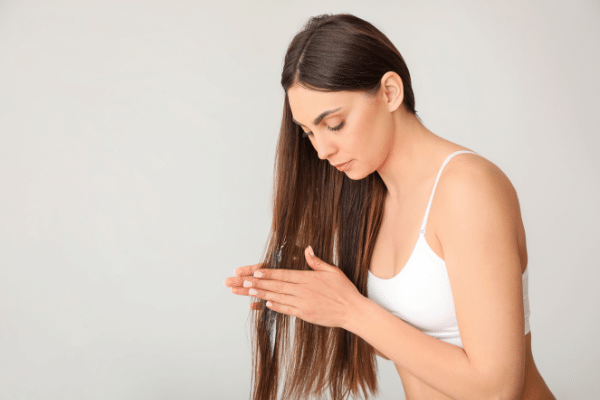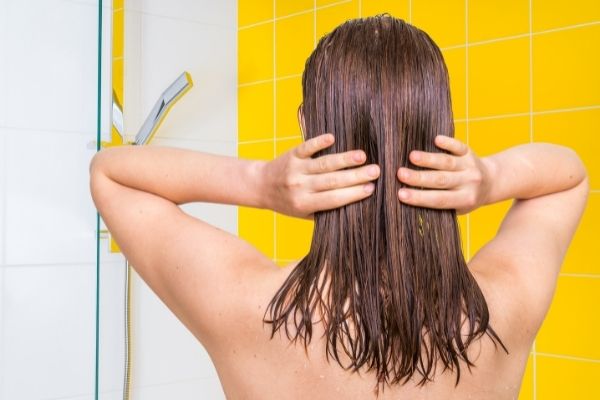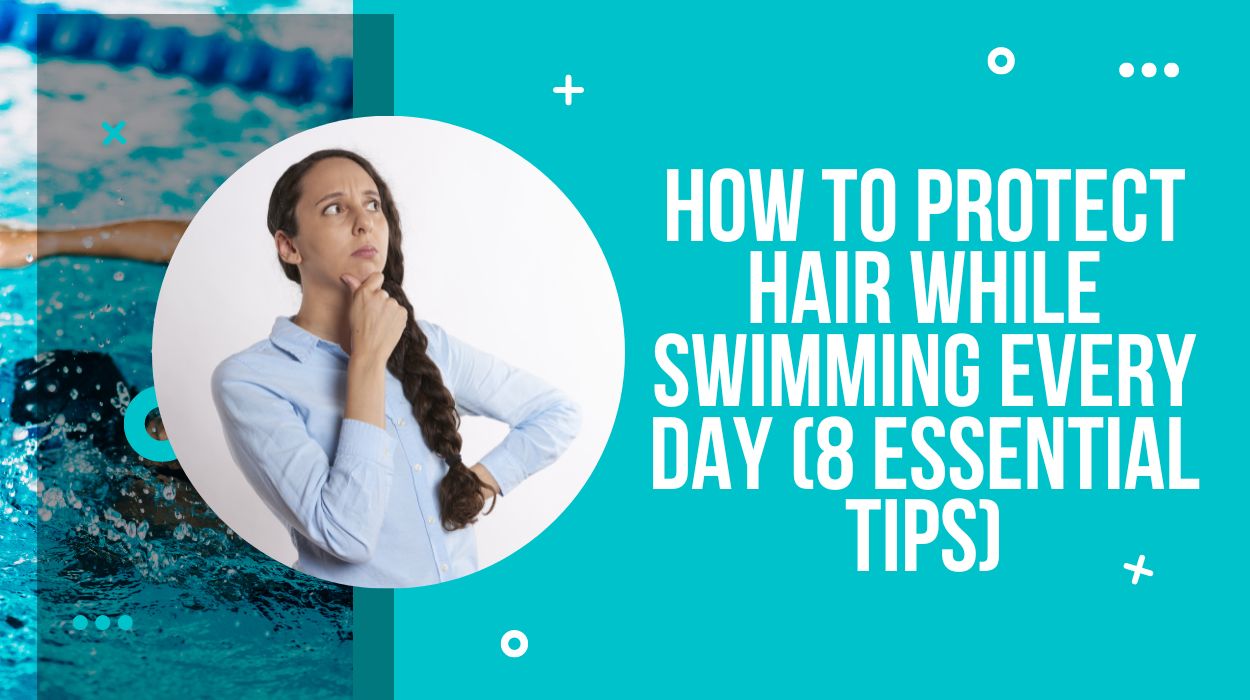Do you enjoy swimming? It can be pretty fun, relaxing and rejuvenating, especially in the summer. On the other hand, it is also a great exercise to help reduce excess body fat since your entire body moves as you swim. However, this downside is that our body and hair are exposed to chlorine. This can cause severe damage to the hair follicles, thus leading to split ends, breakage, and hair fall.
Thus, it is crucial to learn the tricks to protect your hair while you swim, especially if it is a daily activity that you indulge yourself in. Read on to know how you can protect your hair from chlorinated water.
Why is chlorine used, and how it affects our hair?

Chlorine is a naturally occurring chemical substance used as a cleaner due to its disinfectant property. This property is powerful enough to break down dirt and oil molecules and also kill germs and bacteria.
Most of the cleaners that we use at home, in offices, schools, hotels, and hospitals have chlorine content. Due to the same property, it is also used as a bacteria/germ disinfectant in swimming pools.
However, the problem is that our scalp produces natural oils and sebum to protect it from damage from heat, water, dirt and so on. So, when our hair is soaked in chlorinated water, the natural protective oil on our hair is stripped away.
This can lead to over-drying and also makes our scalp prone to dirt, dust and other pollutants in the atmosphere. Chlorinated water also results in the formation of free radicals, which can change the physical property of our hair as it reacts with hair keratin. Thus, it makes our hair follicles weak, causing breakage and excessive hair fall.
8 Essential Tips to Protect Hair When Swimming

To protect your hair from chlorinated water, proper hair care should be followed before, during and even after your swimming session. Let us look at some of them.
4 Pre-swimming hair care
Here’s what the pre-swimming hair care ritual involves.
1. Oil your hair

Why is oiling hair helpful before we go for a swim? Remember how our scalp produces natural oils to protect our follicles from further damage?
Applying oil does the same as the oils penetrate the shaft, thus forming a protective layer. This ensures that more chlorinated water does not penetrate our hair shaft.
You can use coconut oil or olive oil as it moisturises your hair, prevents protein loss, and protects hair from pollutants, sun, water, smoke, etc. It also helps prevent breakage and hair loss and protects our hair from harmful UV rays.
Gentilly massages the oil into your hair as it increases the blood flow and promotes hair growth.
2. Shower before entering the pool

Have you ever thought about why they ask you to shower before you enter the pool? By showering, they mean to wash your hair in non-chlorinated water. But what is the use of this?
Partly the reason is to keep the pool clean from the germs that might be prevented on our body. The other reason is to protect our hair and skin.
Since our hair acts as a sponge, it soaks up 30% to 50% of non-chlorinated water when we shower. This means that when we swim in a chlorinated pool, our hair absorbs less chlorinated water. Hence, the effect of chlorine on our hair will not be as damaging as before.
3. Use a leave-in conditioner

If you do not want to use oil on your hair before entering the pool, this is the alternative. Either use a regular or a deep leave-in conditioner as it helps to protect the hair follicles. Just like oils, it creates a protective layer whereby the natural oils aren’t stripped away, and the scalp is not left dry.
Not only does it protect our hair follicles from chlorine damage, but it also restores moisture and reverses the damage caused by chlorinated water.
A leave-in conditioner also reduces the amount of hair tangle found after the swimming session, eliminating frizzes and static and reviving curls.
4. Braid your hair
This might come as a surprise to your, but braiding your hair does help as it makes it more difficult for the chlorinated water to enter the innermost part of the hair.
However, while braiding, make sure you do not braid too tightly as it exerts more strain on your hair cuticles. It also makes the detangling process much more manageable.
Haircare during swimming sessions
So, how can you properly take care of your hair while being in the water?
A swimming cap is just as important as swimwear

Swimming caps act as a tangible protective layer like oil and a leave-in conditioner. While wearing the cap, make sure that the entire head is covered so that the chlorinated water does not seep in and damage hair follicles. This does not mean that our hair will be dehydrated, but it is better than entirely wet.
It might be very uncomfortable for some people since it sticks onto your hair tightly, but it is one of the best ways to protect your hair while in the pool. If it brings you some comfort, match your swimming cap with your swimsuit.
If your kids are fuzzy about wearing it, try buying them colourful ones with designs as this might capture their attention.
3 Post-swimming hair care

Don’t miss the following post-swimming haircare.
1. Don’t use a thick towel to dry your hair
After a swim, most people tend to dry their hair immediately with a towel. When you use a thick towel to dry your hair, it can damage your hair as it’s at its weakest point when it is wet.
While drying with a towel, we tend to pull the strands; as a result, it is more prone to breakage and hair fall. Instead, you can gently dab the water using a soft towel.
2. Thorough hair wash
After your swimming session, do not forget to rinse your hair since there has been chlorine build-up on your scalp.
However, while rinsing your hair, use fresh running water or non-chlorinated water so as to remove salts and other chemicals caused by chlorinated water.
3. Shampoo and deep conditioner

Simply washing your hair with water might not altogether remove the chlorine build up on your scalp. Chlorine not only damages your hair texture but also makes it dry, frizzy and extremely difficult to comb later on.
The mild shampoo helps solve this problem. After shampooing your hair, apply a deep hair conditioner to help reduce the dryness. It adds moisture and nutrients needed for healthy hair growth.
You May Like to Read:
8 Ways To Increase Hair Density
5 Benefits Of Tea Tree Oil For Hair
Verdict
Swimming is a fun exercise that most of us enjoy. However, the chlorine in swimming pools is highly harmful to your hair and skin. So, we need to protect it as much as possible by using hair care treatments before, during and after your swimming session.
Do you know any other tricks to protect your hair from chlorinated water? Please do let us know in the comment section below.


